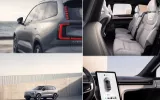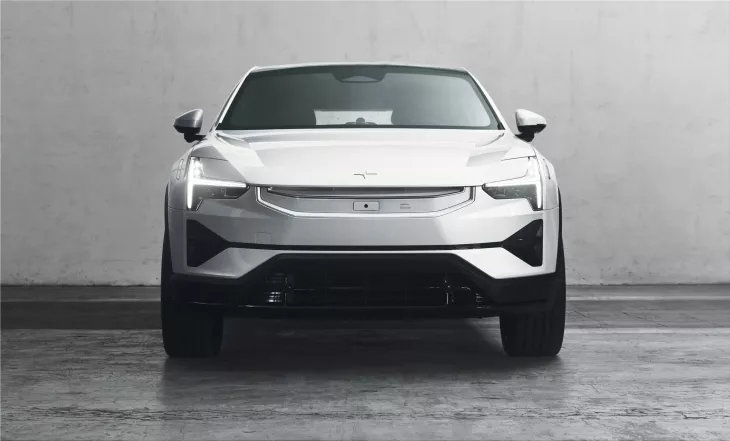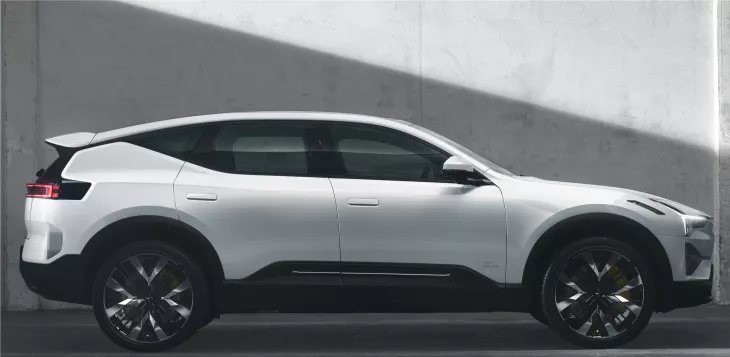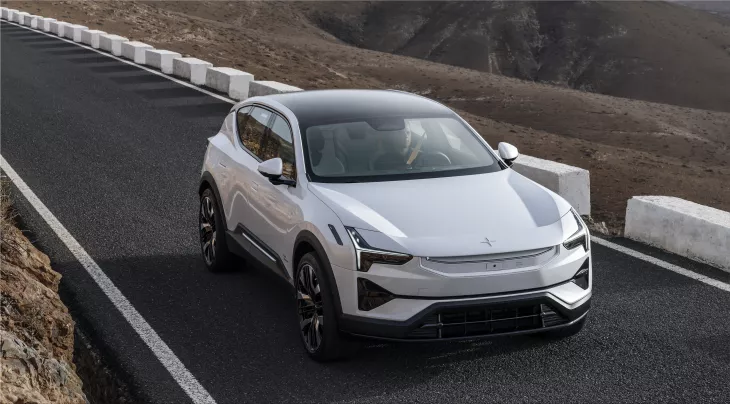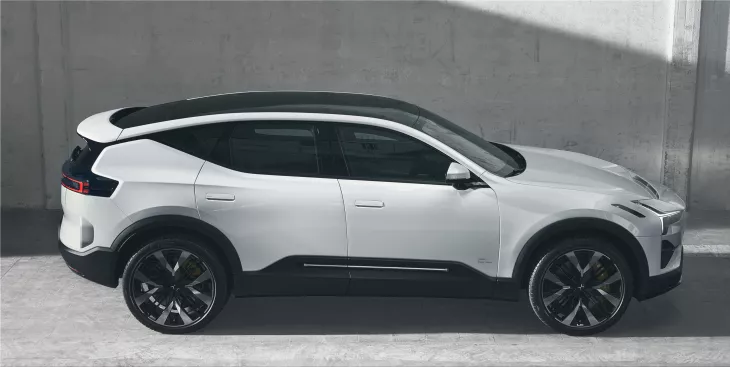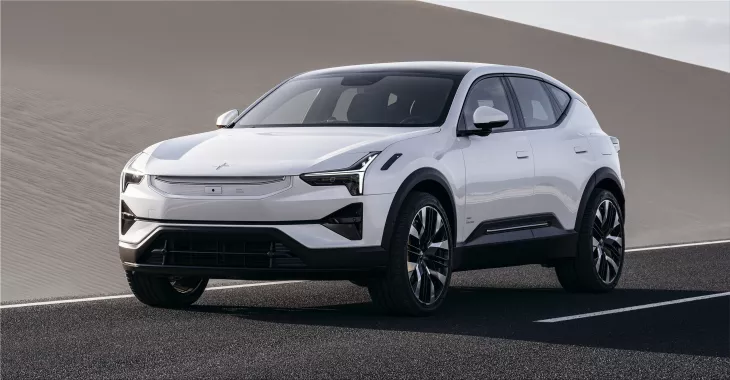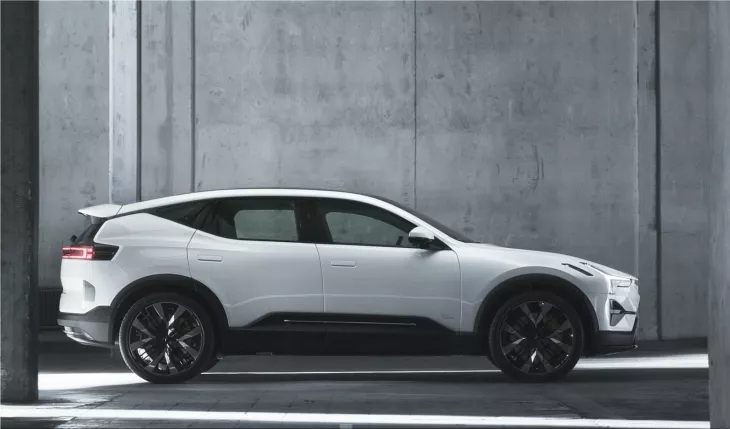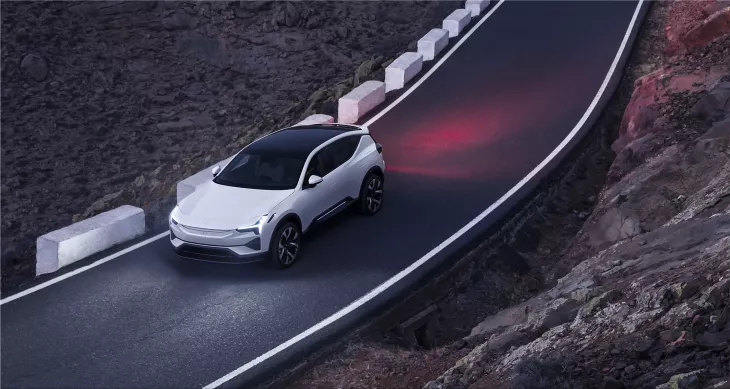The Polestar 3 is a beautiful electric SUV recently released. The SUV of the electric age is characterized by a combination of Scandinavian minimalism and functionality with distinct aspects of sports cars. While maintaining the robust and wide stance typical of SUVs, the Polestar 3 delivers a new aerodynamic profile to the sector. Discreet but effective aerodynamic refinements, such as a front wing integrated into the hood and a rear wing in the roof spoiler, along with rear aero blades, have made this possible.
The Polestar 3's premium interior materials were handpicked for their eco-friendly qualities, stunning visual appeal, and sumptuous feel. Among these are seat covers made of biodegradable materials like MicroTech and animal-friendly materials like leather and wool that can be tracked.
When the manufacture of the Polestar 3 commences, a Life Cycle Assessment (LCA) will be conducted in keeping with the company's dedication to openness. More evaluations are on the way, and efforts are being made to lessen the impact across the entire product's life cycle.
The Polestar 3 electric SUV is the company's first automobile to feature NVIDIA DRIVE's distributed computing system. Volvo Cars are responsible for making the software. NVIDIA's robust automotive platform processes information from the car's sensors and cameras to enable high-end safety features like driver monitoring and assistance.
Qualcomm Technologies Inc.'s cutting-edge Snapdragon Cockpit platform drives the infotainment system. The Snapdragon Digital Chassis is a large collection of open and scalable cloud-based vehicle platforms, and this platform is a crucial part of it because it enables exciting interactions between the car's high-resolution displays, its robust audio systems, and the vehicle's seamless connections for both the driver and the passengers.
Volvo's commitment to safety has led to the developing of cutting-edge active and passive safety features for the Polestar 3. For example, cutting-edge technological advances have included installing radar sensors in the passenger compartment to prevent mishaps from occurring when a child is left in a vehicle. These sensors can detect movements as little as one millimeter within the car. To further guard against heat exhaustion and cold shock, the system is also linked to the HVAC.
With consolidated processing power and contributions from market-leading safety technology firms like Zenseact, Luminar, and Smart Eye, Polestar was able to integrate a cutting-edge ADAS (Advanced Driver Assistance System) into the Polestar 3.
There are twelve ultrasonic sensors on the Polestar 3's exterior, in addition to the five radar units and five cameras that come standard. Under the aerodynamic front wing is the SmartZone, which houses a camera, many forward-facing sensors, and a heatable radar module. For the first time in a Polestar, two driver-monitoring cameras outfitted with Smart Eye's cutting-edge eye-tracking technology will be available in the passenger cabin. If the sensors detect a distracted, tired, or absent driver, the cameras will trigger warning messages, sound signals, and emergency stops.
With the release of the Polestar 3 electric SUV, a two-engine layout and rear-wheel-drive bias become standard. A maximum of 360 kW of power and 840 Nm of torque are available in the base model. With the performance package, you may get 380 kW (550 HP) and 910 Nm (114.3 lb-ft) of torque. There is a foot pedal with variable resistance. Also included is electric torque distribution with a rear axle double clutch, an improvement on the torque distribution system introduced with the Polestar 1. The car has a new feature that turns off the back engine. When engaged, the front engine takes over propelling duties, which might improve efficiency in certain situations.
The Polestar 3 electric SUV follows in the footsteps of the Polestar 2 in that it is loaded with features and allows for straightforward customization of optional additions, both of which facilitate smooth production logistics. Each trim level comes standard with a panoramic glass roof, air suspension, LED headlights and taillights, proximity sensor-equipped retractable door handles, and 21-inch alloy wheels. They include features that improve the vehicle's perceived quality and comfort, such as a Bowers & Wilkins audio system with 25 speakers, 3D surround sound, Dolby Atmos, dampened doors, a head-up display, and the driver assistant Pilot Assist.
Optimized air suspension, larger 22-inch wheels, and Swedish Gold accents are just some of the features available in the Performance package, which also boosts maximum power and torque to 380 kW and 910 Nm, respectively.
The Polestar 3 Long Range Dual Motor (360 kW, 840 Nm) will be available at a suggested starting price of $105,000 upon release.

